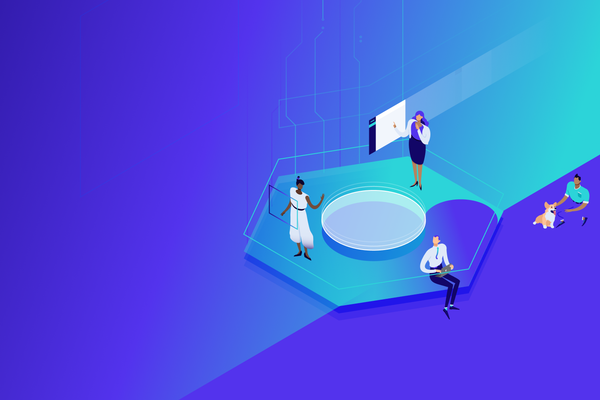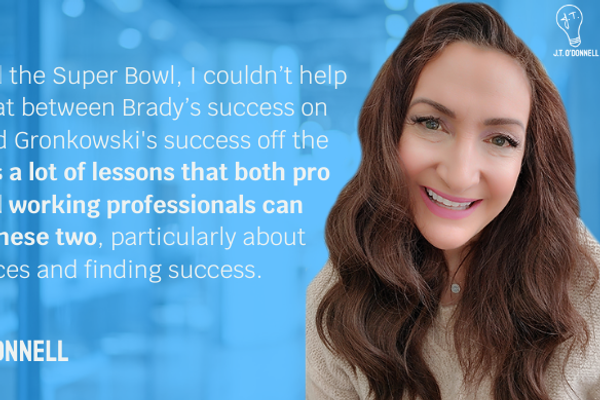As a technology seller at the onset of the pandemic, I witnessed firsthand as buyers made a statement by revolting against spammy sales efforts, making it clear that they expected sellers to willingly facilitate a modern buyer journey that enabled them to evaluate and validate a solution and company before interacting with salespeople, and rewarding the sellers that proactively guided multi-stakeholder buying groups through increasingly complex and resource intense buying decisions.
Savvy sellers recognized the shift and aligned with this new set of buyer expectations in five key areas:
- How they originate opportunities and defined a sales “lead”
- How they market their solution
- Offering their website as a generous repository of clear messaging and materials for buyers to anonymously educate themselves about the end-to-end solution and company
- Enabling prospects to self-identify their interest via an email inquiry or web form to initiate the sales conversation after recognizing their need, seeing the vendor as a potentially viable solution to explore, and preparing internally to engage the solution and vendor as a potential initiative
- Actively leading buyers past a strong temptation to stick with the status quo by focusing on individual stakeholder personas, biases, and fears, walking them through surprising insights about their business problem, and clearly communicating both negative and/or rewarding personal implications for inactivity or supporting the buying initiative
Two years later, how have enterprise technology sales organizations adjusted to meet these new buyer expectations?
Recently I had the opportunity to go undercover to see present-day solution sales from a SaaS buyer’s perspective as I swapped hats to evaluate and recommend SaaS platforms for a start-up. Immensely revealing, I learned that technology sellers still have work to do to cater to modern buyer expectations.
These are the top sins that are still present in the buyer journey, followed by my recommendations to improve the experience and sales outcomes.
Sin #1 - Forgetting To Sell An End-To-End Buyer Journey
@solvedbyholland #enterprisesaas #buyersjourney #salesenablement ♬ Summer day - TimTaj
Most professionals are active in native social and peer networks where they source information and form opinions about prospective partners. However, it is all but guaranteed for potential buyers to visit vendor websites seeking product information in the form of videos, blogs, pricelists, case studies, testimonials, white papers, and demos to assess the viability of a prospective solution.
I did the same and found a conspicuous absence of high-level end-to-end tours, explainer videos, or infographics to efficiently familiarize myself with various configurations of each platform’s process flow to assemble a well-thought sales journey for my clients. This left me picking through a matrix of functionality packages, trying to envision how the solution would transform my processes, compared to its competitors, and if a solution that I wanted to recommend, I struggled to scrape together a concise presentation and justification to pitch to C-suite and board members.
Pro Tip: Keep in mind, most enterprise organizations task an already overworked executive to lead a technology evaluation, risk their reputation to pitch and recommend to executives and board members, and oversee the implementation process. As such, think about your website and each piece of content as a pull-through sales and marketing resource to help stakeholders painlessly understand, believe in, and present how your solution will make money, save money, or mitigate risk differently than the status quo, fits alongside other platforms in the lifecycle of their business process, and stands out from competitive solutions. As you supply easily accessible, presentation-ready product information and validation, you will stand out from your competitors and endear buyers.Sin #2 - Starving Or Stalking Buyers

Bigstock
A website is arguably the most powerful repository of information about your solution, your credibility, your tribe, and your values to educate and influence potential buyers and potential job seekers for that matter. It is also the #1 tool for buyers to convert from an anonymous tire kicker to active shopper. As such, when content and ads drive potential buyers to your website and they find a smorgasbord of product information and validation, you equip them to morph into a high-intent buyer as they recognize their needs, see your product and company as a potentially viable solution, and prepare themselves to pursue a conversation with your sales team. But what if they arrive at your website and encounter a confusing message, little to educate themselves, or content that is locked behind a web form?
Speaking for buyers far and wide, no one likes being entrapped by a web form in exchange for basic product info. The secret is out that within mere moments of completing your web form, an SDR or BDR will be hot on their trail with spammy emails, calls, and LinkedIn InMail messages.
Pro Tip: No, your website won’t singlehandedly draw potential buyers and close sales, but if you fail to stock it with engaging content so your buyers can meaningfully evaluate your solution on their own time or if you lock your content behind forms, it creates a sour taste that lasts well into the sales process. Worse yet, they may pass your solution over altogether in an evaluation. As such, make your website a generous library and ditch the web form. Once you’ve established the viability and credibility of your solution, don’t worry, prospective buyers will willingly engage in a conversation as a high-intent buyer.
Sin #3 - Breaking The Golden Rule

Bigstock
Right on cue, as I begrudgingly completed web forms to get my hands on any level of detailed content to study and compare, I felt like a doe on the opening day of hunting season. I was immediately assailed by multiple calls and emails. In the case of one vendor, not one but three different people contacted me as many as three times a day until I emailed an executive asking them to stop contacting me altogether.
Pro Tip: This is a great time for some honest reflection. In his book Sell the Way You Buy, David Priemer points out how seemingly normal people behave completely differently when they’re behind the wheel of a car. He goes on to say, “Unfortunately, many traditional sellers believe that the tactics they use to engage (and often bother) prospective buyers are completely acceptable when they’re doing it under the banner of 'selling.' They bombard customers with low-value templated emails, and disingenuous social media invites quickly followed by schlocky solution pitches and generic cold calls for which they haven’t prepared. Yet, when most people find themselves on the buying side of the table, their awareness of and resistance to these tactics are strong.” If you can fog a mirror, you’ve experienced this yourself, so be honest. Put yourself in your buyer’s shoes and ask yourself if the tactics you use would actually get you to buy you or your product.
Sin #4 - Under Equipping Buyers To Present & Recommend Your Solution

Bigstock
After picking through published resources and lacking clarity about the end-to-end user experience, I scheduled demos.
Now all became clear, right?
Well… Sort of. I gained a greater understanding of the particular platforms but struggled to connect the dots of how they compared, overlapped, or fit with the functionality of adjacent platforms to know what I needed and didn’t need to achieve the end-to-end marketing, business development, and sales journey I sought to create.
Pro Tip: If you are a student of effective presentations or public speaking, you know that every talk starts by thinking about your audience. Who are they, what do they care about, need to know, and how can you best serve them? It isn’t enough to just show your platform. Think of your buyers as sales agents for your solution that you convince and equip to re-sell within their organization. This means they need to come out of calls and demos with a high-level understanding of the solution, how it translates into the entire lifecycle of their business, unique insights into the problems it solves, and equipped with materials to painlessly present and recommend your platform with decision-makers. I suggest a well-thought leave-behind that includes a flowchart or infographic, key points to remember the platform vs. competitors, and a concise business case to pass along and advocate for your solution.
Sin #5 - Missing The Motives That Make The Decision

Bigstock
If you’ve been recruited to participate with a buying committee in recent history, it’s likely you have witnessed tighter purse strings, an increasing number of stakeholders that may have included corporate board members, and taller stakes for supporting an initiative that isn’t executed well, gains lackluster adoption, or under-delivers on promised outcomes.
Adding to stakeholder fear and bias, artificial intelligence, machine learning, and virtual and augmented realities are quickly becoming core components for most SaaS solutions to automate low-value functions. Depending on a given stakeholder’s role, supporting these emerging technologies may be perceived as career suicide. Each stakeholder has their own internal motivations and risk analysis that drives support or opposition to an initiative. Statistics show that nearly 2/3 of all sales engagements conclude with the perceived safest decision: do nothing and stick with the status quo.
Pro Tip: It could be argued that today’s battle to sell technology rivals the dot-com bust that crashed the stock market, real estate market, and financial markets in 2008. On a golf course in New York, a downtrodden stock broker complained that he was the last person investors wanted to hear from being associated with the overnight loss of fortunes. His wise friend suggested otherwise, pointing out that it was the ideal time to call every investor in New York to ask, “How is your stockbroker doing for you, may I help?”
There is an opportunity to serve each stakeholder by making the decision personal for them. What are their core job responsibilities, fears, and biases that internally motivate them to reject or buy into your solution? Proactively appeal to that inner person by showing them how you help them get what they want without risk. Is it an annual bonus for reducing operating costs by 15% that met EBITA numbers and demonstrated competence for the board? Being credited with increasing operational productivity or profits? Willingly embracing a digital transformation initiative that would cause the department to increase production by 20% with the same resources? Appeal to that inner person. Partner and collaborate with an internal champion who is motivated to help colleagues reach a consensus in support of an initiative that best solves organizational dysfunction and improves their workplace.
For additional insights or help with building, modernizing, or navigating the SaaS buyer journey, please reach me on LinkedIn or at lynn@solvedbyholland.com.




